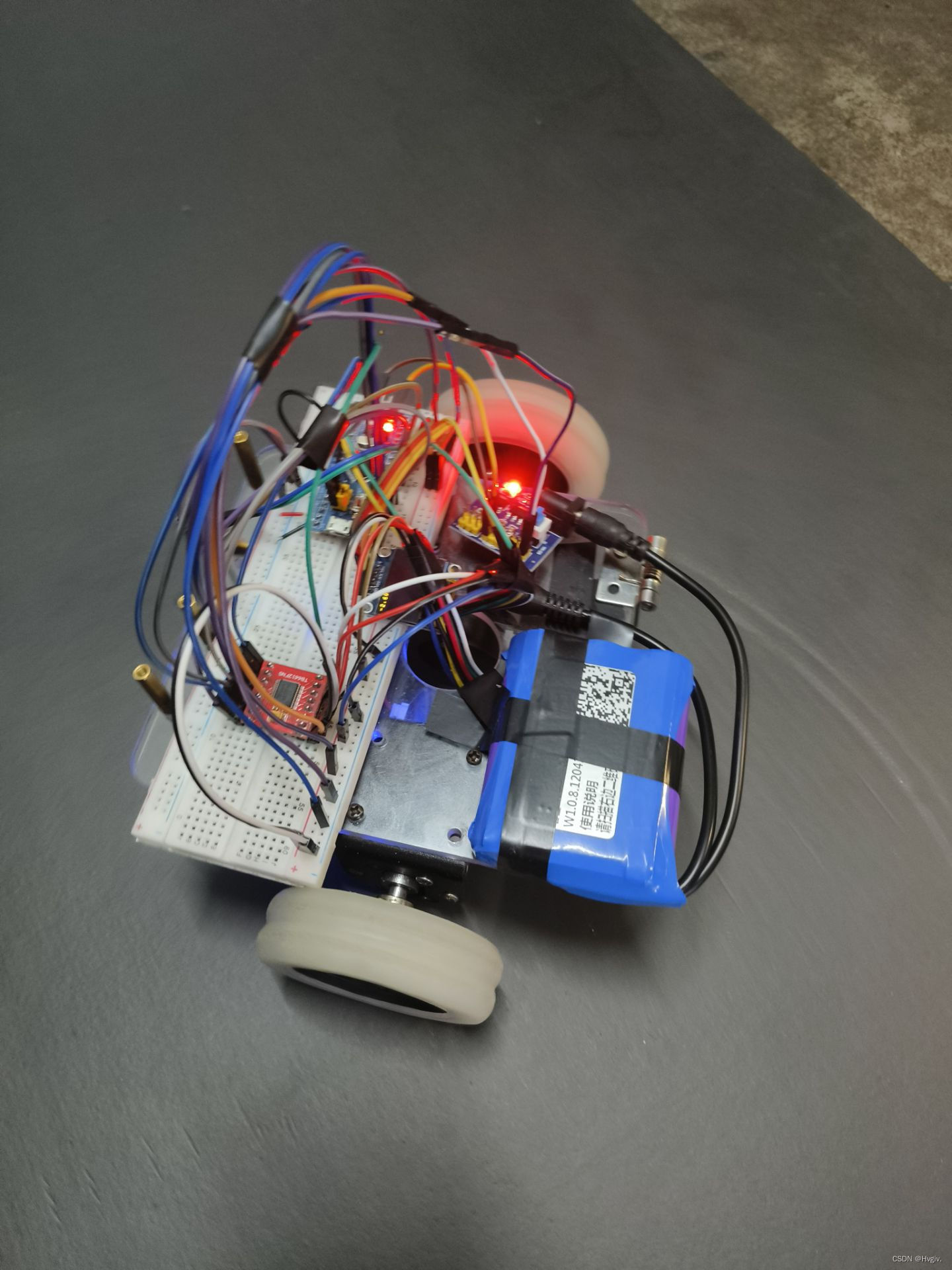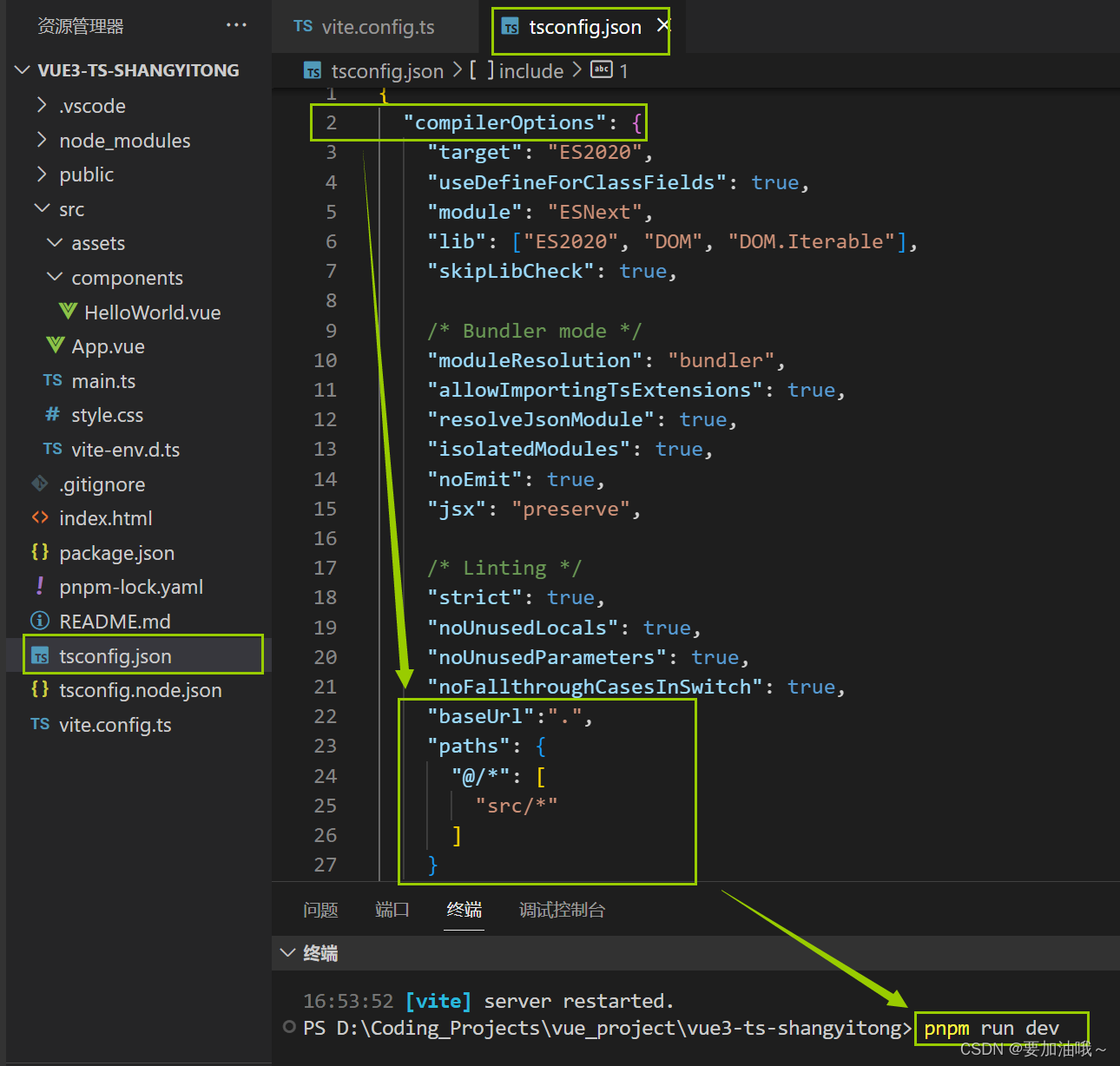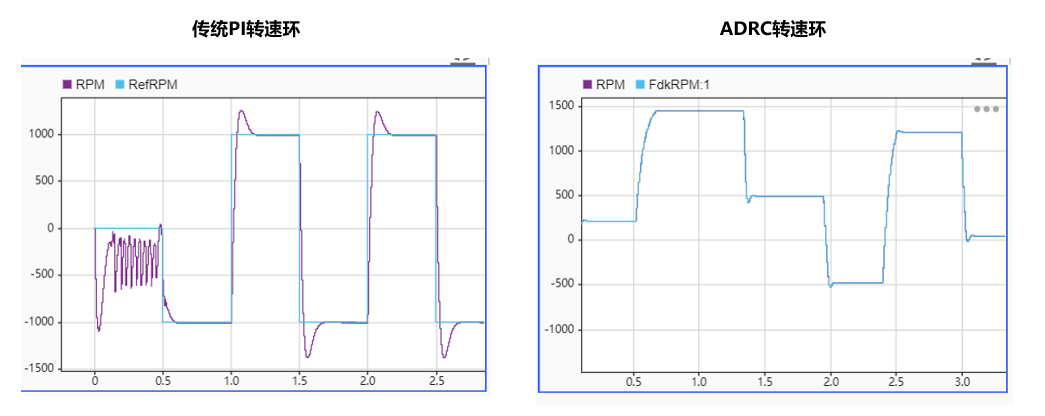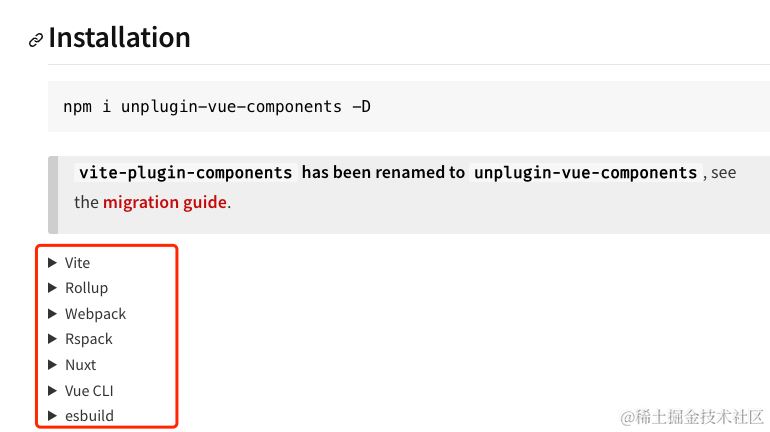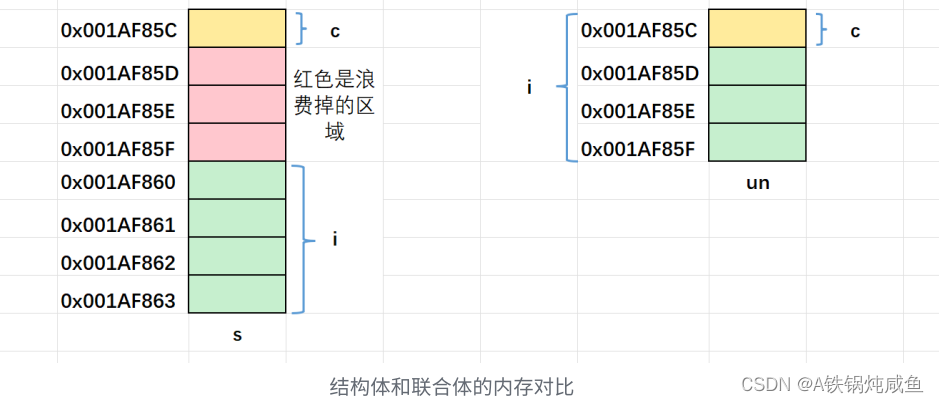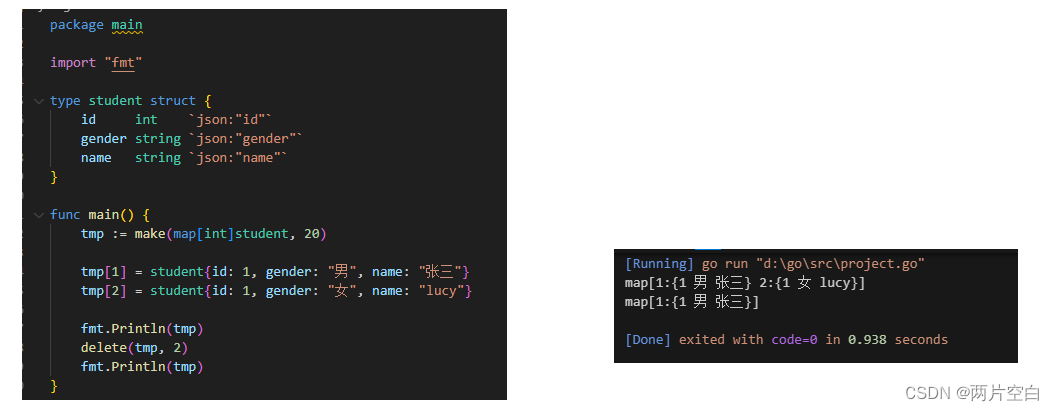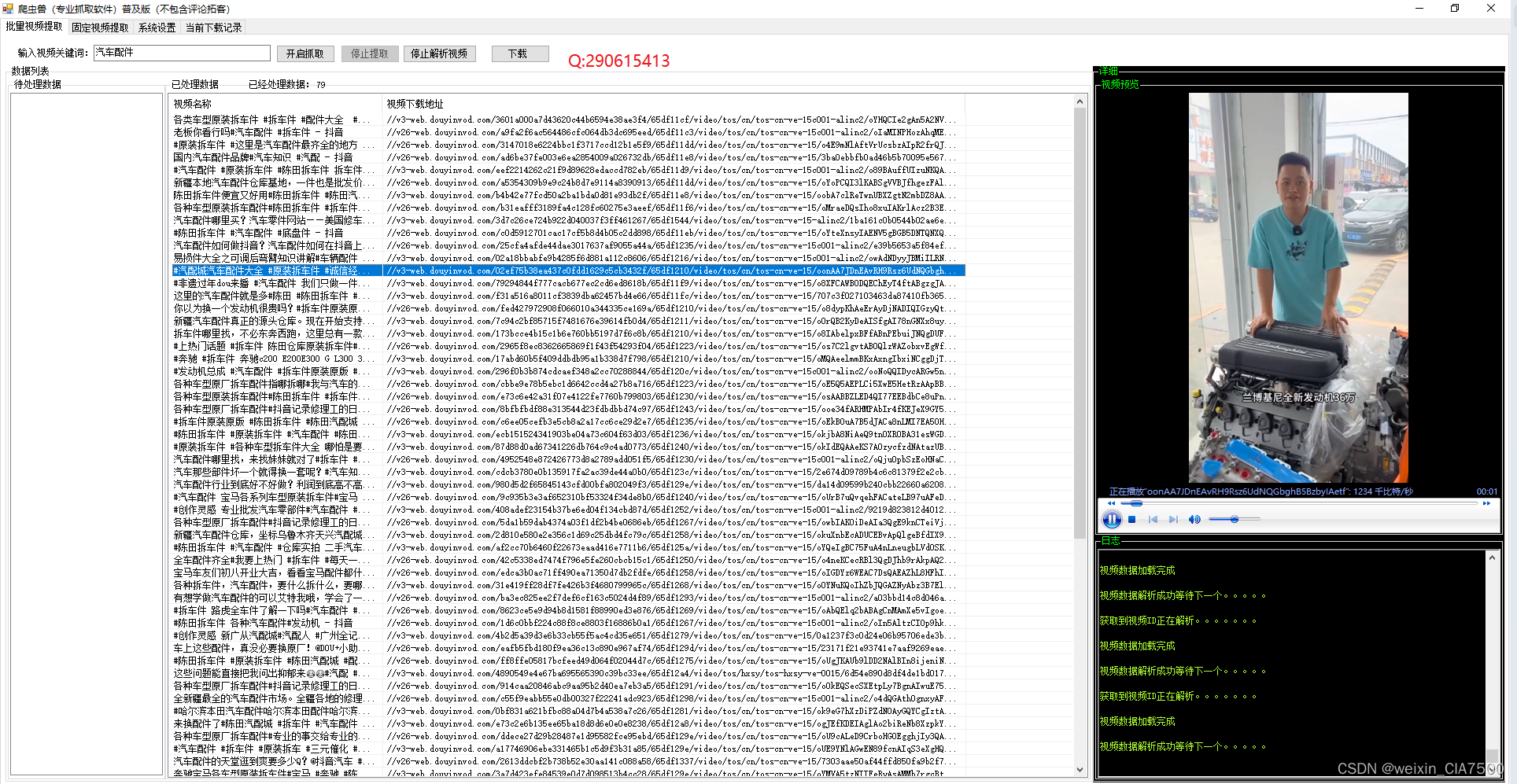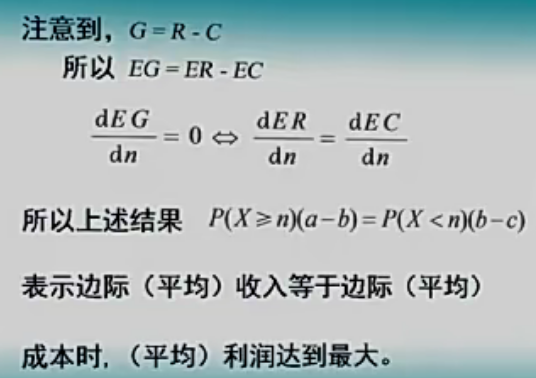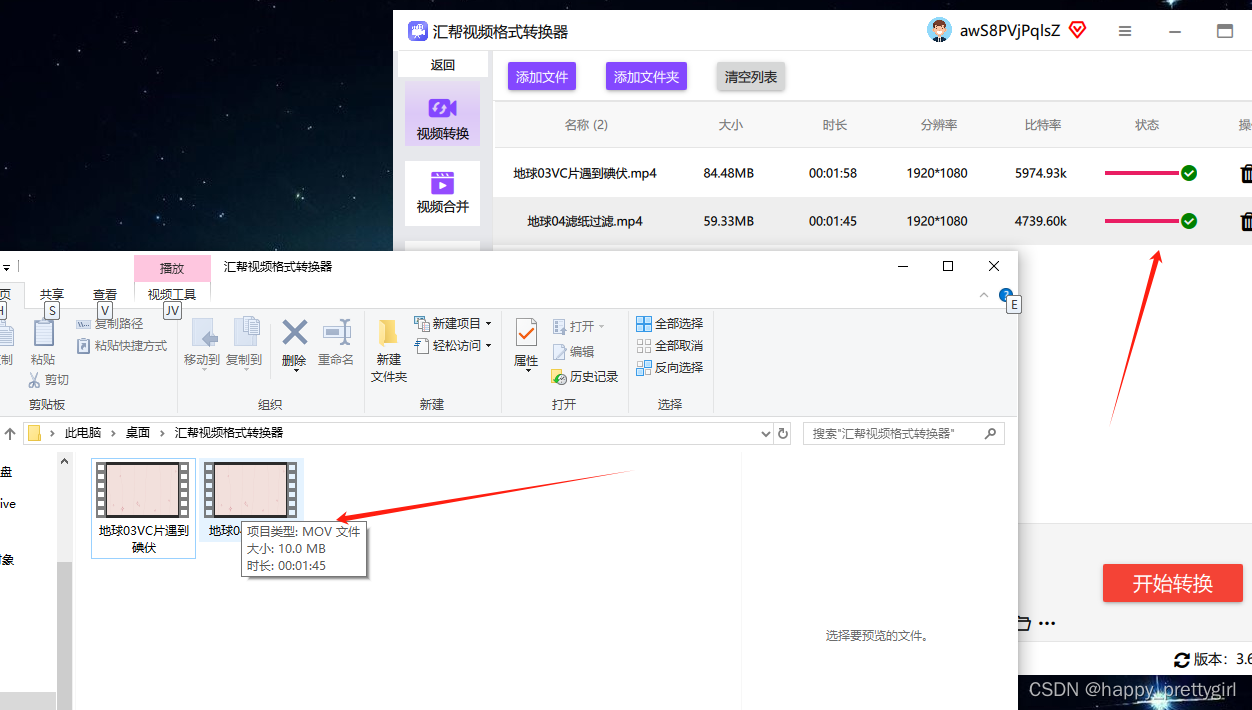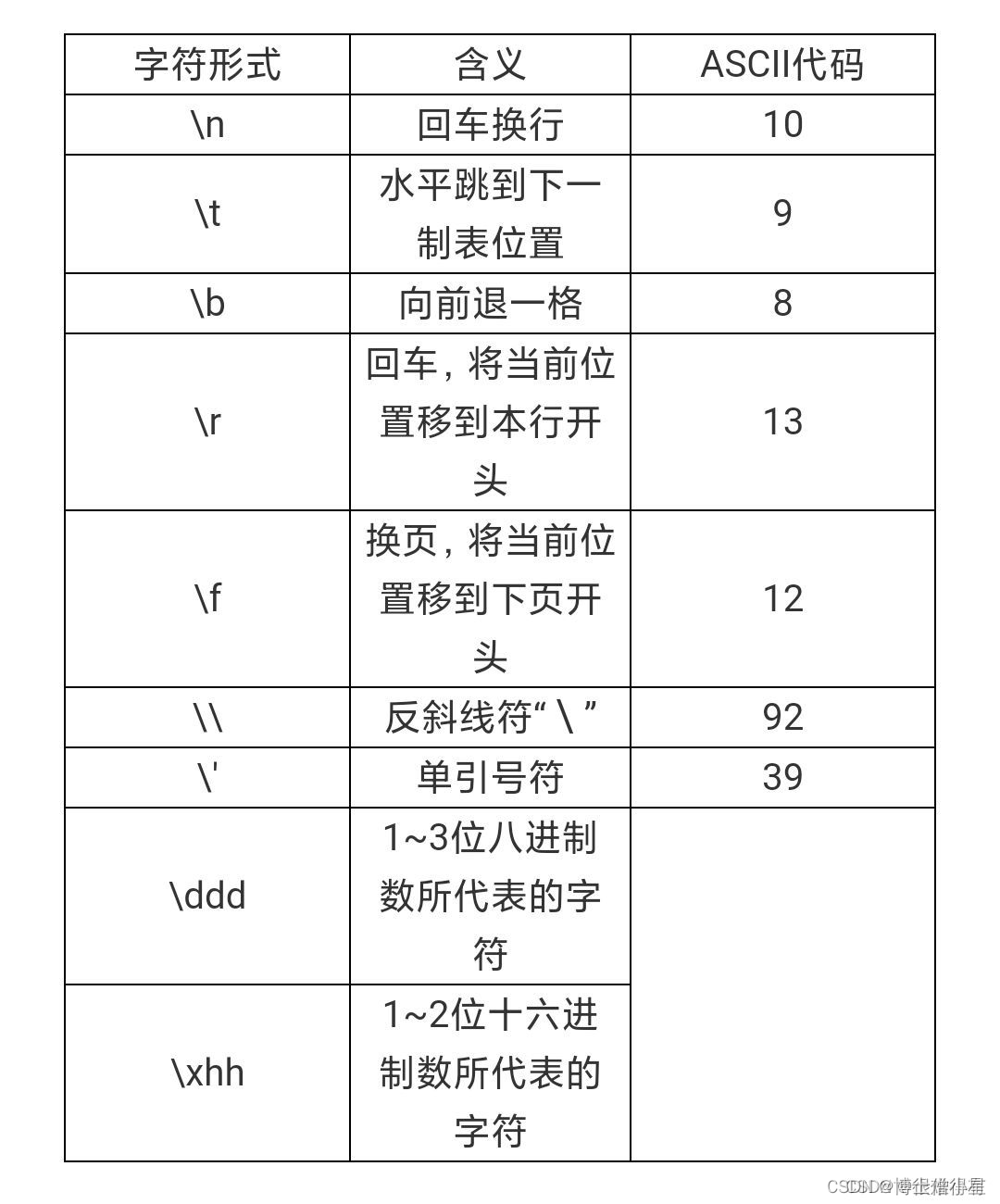PostgreSQL自己带了获取各种对象定义的函数,如下所示:
test=# \df *get*def*函数列表架构模式 | 名称 | 结果数据类型 | 参数数据类型 | 类型
------------+--------------------------------+--------------+-----------------------+------pg_catalog | pg_get_constraintdef | text | oid | 函数pg_catalog | pg_get_constraintdef | text | oid, boolean | 函数pg_catalog | pg_get_function_arg_default | text | oid, integer | 函数pg_catalog | pg_get_functiondef | text | oid | 函数pg_catalog | pg_get_indexdef | text | oid | 函数pg_catalog | pg_get_indexdef | text | oid, integer, boolean | 函数pg_catalog | pg_get_partition_constraintdef | text | oid | 函数pg_catalog | pg_get_partkeydef | text | oid | 函数pg_catalog | pg_get_ruledef | text | oid | 函数pg_catalog | pg_get_ruledef | text | oid, boolean | 函数pg_catalog | pg_get_statisticsobjdef | text | oid | 函数pg_catalog | pg_get_triggerdef | text | oid | 函数pg_catalog | pg_get_triggerdef | text | oid, boolean | 函数pg_catalog | pg_get_viewdef | text | oid | 函数pg_catalog | pg_get_viewdef | text | oid, boolean | 函数pg_catalog | pg_get_viewdef | text | oid, integer | 函数pg_catalog | pg_get_viewdef | text | text | 函数pg_catalog | pg_get_viewdef | text | text, boolean | 函数
(18 行记录)但是并没有查询表定义的函数,但是查询表是经常被使用到的,像openguassdb已经都加上了,在网上找了下别人定义的,修改了下,如下:
-- Change History:
-- 2022-09-19 MJV FIX: Do not add CREATE INDEX statements if they indexes are defined within the Table definition as ADD CONSTRAINT.
do $$
<<first_block>>
DECLAREcnt int;
BEGINSELECT count(*) into cntFROM pg_catalog.pg_type t LEFT JOIN pg_catalog.pg_namespace n ON n.oid = t.typnamespace WHERE (t.typrelid = 0 OR (SELECT c.relkind = 'c' FROM pg_catalog.pg_class c WHERE c.oid = t.typrelid)) AND NOT EXISTS(SELECT 1 FROM pg_catalog.pg_type el WHERE el.oid = t.typelem AND el.typarray = t.oid)AND n.nspname <> 'pg_catalog' AND n.nspname <> 'information_schema' AND pg_catalog.pg_type_is_visible(t.oid)AND pg_catalog.format_type(t.oid, NULL) in ('tabledef_fkeys','tabledef_trigs');IF cnt = 0 THENRAISE INFO 'Creating custom types.';CREATE TYPE public.tabledef_fkeys AS ENUM ('FKEYS_INTERNAL', 'FKEYS_EXTERNAL', 'FKEYS_COMMENTED', 'FKEYS_NONE');CREATE TYPE public.tabledef_trigs AS ENUM ('INCLUDE_TRIGGERS', 'NO_TRIGGERS');END IF;
end first_block $$;-- SELECT count(*) into cnt
-- FROM pg_catalog.pg_type t LEFT JOIN pg_catalog.pg_namespace n ON n.oid = t.typnamespace WHERE (t.typrelid = 0 OR (SELECT c.relkind = 'c' FROM pg_catalog.pg_class c WHERE c.oid = t.typrelid))
-- AND NOT EXISTS(SELECT 1 FROM pg_catalog.pg_type el WHERE el.oid = t.typelem AND el.typarray = t.oid)
-- AND n.nspname <> 'pg_catalog' AND n.nspname <> 'information_schema' AND pg_catalog.pg_type_is_visible(t.oid)
-- AND pg_catalog.format_type(t.oid, NULL) in ('tabledef_fkeys','tabledef_trigs');-- Create enum types used by this function
-- DROP TYPE IF EXISTS public.tabledef_fkeys;
-- DROP TYPE IF EXISTS public.tabledef_trigs;
-- CREATE TYPE public.tabledef_fkeys AS ENUM ('FKEYS_INTERNAL', 'FKEYS_EXTERNAL', 'FKEYS_COMMENTED', 'FKEYS_NONE');
-- CREATE TYPE public.tabledef_trigs AS ENUM ('INCLUDE_TRIGGERS', 'NO_TRIGGERS');-- SELECT * FROM public.pg_get_tabledef('sample', 'address');
CREATE OR REPLACE FUNCTION public.pg_get_tabledef(in_schema varchar,in_table varchar,in_fktype public.tabledef_fkeys DEFAULT 'FKEYS_INTERNAL',in_trigger public.tabledef_trigs DEFAULT 'NO_TRIGGERS'
)
RETURNS text
LANGUAGE plpgsql VOLATILE
AS
$$/* ********************************************************************************
COPYRIGHT NOTICE FOLLOWS. DO NOT REMOVE
Copyright (c) 2021 SQLEXEC LLCPermission to use, copy, modify, and distribute this software and its documentation
for any purpose, without fee, and without a written agreement is hereby granted,
provided that the above copyright notice and this paragraph and the following two paragraphs appear in all copies.IN NO EVENT SHALL SQLEXEC LLC BE LIABLE TO ANY PARTY FOR DIRECT, INDIRECT,INDIRECT SPECIAL,
INCIDENTAL, OR CONSEQUENTIAL DAMAGES, INCLUDING LOST PROFITS, ARISING OUT OF THE USE
OF THIS SOFTWARE AND ITS DOCUMENTATION, EVEN IF SQLEXEC LLC HAS BEEN ADVISED OF THE
POSSIBILITY OF SUCH DAMAGE.SQLEXEC LLC SPECIFICALLY DISCLAIMS ANY WARRANTIES, INCLUDING, BUT NOT LIMITED TO,
THE IMPLIED WARRANTIES OF MERCHANTABILITY AND FITNESS FOR A PARTICULAR PURPOSE.
THE SOFTWARE PROVIDED HEREUNDER IS ON AN "AS IS" BASIS, AND SQLEXEC LLC HAS
NO OBLIGATIONS TO PROVIDE MAINTENANCE, SUPPORT, UPDATES, ENHANCEMENTS, OR MODIFICATIONS.************************************************************************************ */-- History:
-- Date Description
-- ========== ======================================================================
-- 2021-03-20 Original coding using some snippets from
-- https://stackoverflow.com/questions/2593803/how-to-generate-the-create-table-sql-statement-for-an-existing-table-in-postgr
-- 2021-03-21 Added partitioned table support, i.e., PARTITION BY clause.
-- 2021-03-21 Added WITH clause logic where storage parameters for tables are set.
-- 2021-03-22 Added tablespace logic for tables and indexes.
-- 2021-03-24 Added inheritance-based partitioning support for PG 9.6 and lower.
-- 2022-09-12 Fixed Issue#1: Added fix for PostGIS columns where we do not presume the schema, leave without schema to imply public schemaDECLAREv_table_ddl text;v_table_oid int;v_colrec record;v_constraintrec record;v_indexrec record;v_primary boolean := False;v_constraint_name text;v_fkey_defs text;v_trigger text := '';v_partition_key text := '';v_partbound text;v_parent text;v_persist text;v_temp text := ''; v_relopts text;v_tablespace text;v_pgversion int;bPartition boolean;bInheritance boolean;bRelispartition boolean;constraintarr text[] := '{}';constraintelement text;bSkip boolean;BEGINSELECT c.oid, (select setting from pg_settings where name = 'server_version_num') INTO v_table_oid, v_pgversion FROM pg_catalog.pg_class c LEFT JOIN pg_catalog.pg_namespace n ON n.oid = c.relnamespaceWHERE c.relkind in ('r','p') AND c.relname = in_table AND n.nspname = in_schema;-- RAISE NOTICE 'version=%', v_pgversion;-- throw an error if table was not foundIF (v_table_oid IS NULL) THENRAISE EXCEPTION 'table does not exist';END IF;-- get user-defined tablespaces if applicableSELECT tablespace INTO v_temp FROM pg_tables WHERE schemaname = in_schema and tablename = in_table and tablespace IS NOT NULL;IF v_tablespace IS NULL THENv_tablespace := 'TABLESPACE pg_default';ELSEv_tablespace := 'TABLESPACE ' || v_temp;END IF;-- also see if there are any SET commands for this table, ie, autovacuum_enabled=off, fillfactor=70WITH relopts AS (SELECT unnest(c.reloptions) relopts FROM pg_class c, pg_namespace n WHERE n.nspname = in_schema and n.oid = c.relnamespace and c.relname = in_table) SELECT string_agg(r.relopts, ', ') as relopts INTO v_temp from relopts r;IF v_temp IS NULL THENv_relopts := '';ELSEv_relopts := ' WITH (' || v_temp || ')';END IF;-- ------------------------------------------------------------------------------------- Create table defs for partitions/children using inheritance or declarative methods.-- inheritance: pg_class.relkind = 'r' pg_class.relispartition=false pg_class.relpartbound is NULL-- declarative: pg_class.relkind = 'r' pg_class.relispartition=true pg_class.relpartbound is NOT NULL-- -----------------------------------------------------------------------------------v_partbound := '';bPartition := False;bInheritance := False;IF v_pgversion < 100000 THENSELECT c2.relname parent INTO v_parent from pg_class c1, pg_namespace n, pg_inherits i, pg_class c2WHERE n.nspname = in_schema and n.oid = c1.relnamespace and c1.relname = in_table and c1.oid = i.inhrelid and i.inhparent = c2.oid and c1.relkind = 'r'; IF (v_parent IS NOT NULL) THENbPartition := True;bInheritance := True;END IF;ELSESELECT c2.relname parent, c1.relispartition, pg_get_expr(c1.relpartbound, c1.oid, true) INTO v_parent, bRelispartition, v_partbound from pg_class c1, pg_namespace n, pg_inherits i, pg_class c2WHERE n.nspname = in_schema and n.oid = c1.relnamespace and c1.relname = in_table and c1.oid = i.inhrelid and i.inhparent = c2.oid and c1.relkind = 'r';IF (v_parent IS NOT NULL) THENbPartition := True;IF bRelispartition THENbInheritance := False;ELSEbInheritance := True;END IF;END IF;END IF;IF bPartition THENIF bInheritance THEN-- inheritance-basedv_table_ddl := 'CREATE TABLE ' || in_schema || '.' || in_table || '( '|| E'\n';-- Jump to constraints section to add the check constraintsELSE-- declarative-basedIF v_relopts <> '' THENv_table_ddl := 'CREATE TABLE ' || in_schema || '.' || in_table || ' PARTITION OF ' || in_schema || '.' || v_parent || ' ' || v_partbound || v_relopts || ' ' || v_tablespace || '; ' || E'\n';ELSEv_table_ddl := 'CREATE TABLE ' || in_schema || '.' || in_table || ' PARTITION OF ' || in_schema || '.' || v_parent || ' ' || v_partbound || ' ' || v_tablespace || '; ' || E'\n';END IF;-- Jump to constraints and index section to add the check constraints and indexes and perhaps FKeysEND IF;END IF;-- RAISE INFO 'DEBUG1: tabledef so far: %', v_table_ddl;IF NOT bPartition THEN-- see if this is unlogged or temporary tableselect c.relpersistence into v_persist from pg_class c, pg_namespace n where n.nspname = in_schema and n.oid = c.relnamespace and c.relname = in_table and c.relkind = 'r';IF v_persist = 'u' THENv_temp := 'UNLOGGED';ELSIF v_persist = 't' THENv_temp := 'TEMPORARY';ELSEv_temp := '';END IF;END IF;-- start the create definition for regular tables unless we are in progress creating an inheritance-based child tableIF NOT bPartition THENv_table_ddl := 'CREATE ' || v_temp || ' TABLE ' || in_schema || '.' || in_table || ' (' || E'\n';END IF;-- RAISE INFO 'DEBUG2: tabledef so far: %', v_table_ddl; -- define all of the columns in the table unless we are in progress creating an inheritance-based child tableIF NOT bPartition THENFOR v_colrec INSELECT c.column_name, c.data_type, c.udt_name, c.character_maximum_length, c.is_nullable, c.column_default, c.numeric_precision, c.numeric_scale, c.is_identity, c.identity_generation FROM information_schema.columns c WHERE (table_schema, table_name) = (in_schema, in_table) ORDER BY ordinal_positionLOOPv_table_ddl := v_table_ddl || ' ' -- note: two char spacer to start, to indent the column|| v_colrec.column_name || ' '-- || CASE WHEN v_colrec.data_type = 'USER-DEFINED' THEN in_schema || '.' || v_colrec.udt_name ELSE v_colrec.data_type END || CASE WHEN v_colrec.udt_name in ('geometry', 'box2d', 'box2df', 'box3d', 'geography', 'geometry_dump', 'gidx', 'spheroid', 'valid_detail')THEN v_colrec.udt_name WHEN v_colrec.data_type = 'USER-DEFINED' THEN in_schema || '.' || v_colrec.udt_name ELSE v_colrec.data_type END || CASE WHEN v_colrec.is_identity = 'YES' THEN CASE WHEN v_colrec.identity_generation = 'ALWAYS' THEN ' GENERATED ALWAYS AS IDENTITY' ELSE ' GENERATED BY DEFAULT AS IDENTITY' END ELSE '' END|| CASE WHEN v_colrec.character_maximum_length IS NOT NULL THEN ('(' || v_colrec.character_maximum_length || ')') WHEN v_colrec.numeric_precision > 0 AND v_colrec.numeric_scale > 0 THEN '(' || v_colrec.numeric_precision || ',' || v_colrec.numeric_scale || ')' ELSE '' END || ' '|| CASE WHEN v_colrec.is_nullable = 'NO' THEN 'NOT NULL' ELSE 'NULL' END|| CASE WHEN v_colrec.column_default IS NOT null THEN (' DEFAULT ' || v_colrec.column_default) ELSE '' END|| ',' || E'\n';END LOOP;END IF;-- RAISE INFO 'DEBUG3: tabledef so far: %', v_table_ddl; -- define all the constraintsFOR v_constraintrec INSELECT con.conname as constraint_name, con.contype as constraint_type,CASEWHEN con.contype = 'p' THEN 1 -- primary key constraintWHEN con.contype = 'u' THEN 2 -- unique constraintWHEN con.contype = 'f' THEN 3 -- foreign key constraintWHEN con.contype = 'c' THEN 4ELSE 5END as type_rank,pg_get_constraintdef(con.oid) as constraint_definitionFROM pg_catalog.pg_constraint con JOIN pg_catalog.pg_class rel ON rel.oid = con.conrelid JOIN pg_catalog.pg_namespace nsp ON nsp.oid = connamespaceWHERE nsp.nspname = in_schema AND rel.relname = in_table ORDER BY type_rankLOOPIF v_constraintrec.type_rank = 1 THENv_primary := True;v_constraint_name := v_constraintrec.constraint_name;IF bPartition THENcontinue;END IF;END IF;-- RAISE INFO 'DEBUG4: constraint name= %', v_constraintrec.constraint_name; constraintarr := constraintarr || string_to_array(v_constraintrec.constraint_name,',');IF in_fktype <> 'FKEYS_INTERNAL' AND v_constraintrec.constraint_type = 'f' THENcontinue;END IF;v_table_ddl := v_table_ddl || ' ' -- note: two char spacer to start, to indent the column|| 'CONSTRAINT' || ' '|| v_constraintrec.constraint_name || ' '|| v_constraintrec.constraint_definition|| ',' || E'\n';END LOOP;-- RAISE INFO 'DEBUG5: tabledef so far: %', v_table_ddl; -- drop the last comma before ending the create statementv_table_ddl = substr(v_table_ddl, 0, length(v_table_ddl) - 1) || E'\n';-- ----------------------------------------------------------------------------- at this point we have everything up to the last table-enclosing parenthesis-- ----------------------------------------------------------------------------- RAISE NOTICE 'ddlsofar1: %', v_table_ddl;-- See if this is an inheritance-based child table and finish up the table create.IF bPartition and bInheritance THENv_table_ddl := v_table_ddl || ') INHERITS (' || in_schema || '.' || v_parent || ') ' || E'\n' || v_relopts || ' ' || v_tablespace || ';' || E'\n';END IF;IF v_pgversion >= 100000 AND NOT bPartition and NOT bInheritance THEN-- See if this is a partitioned table (pg_class.relkind = 'p') and add the partitioned key SELECT pg_get_partkeydef(c1.oid) as partition_key INTO v_partition_key FROM pg_class c1 JOIN pg_namespace n ON (n.oid = c1.relnamespace) LEFT JOIN pg_partitioned_table p ON (c1.oid = p.partrelid) WHERE n.nspname = in_schema and n.oid = c1.relnamespace and c1.relname = in_table and c1.relkind = 'p';IF v_partition_key IS NOT NULL AND v_partition_key <> '' THEN-- add partition clause-- NOTE: cannot specify default tablespace for partitioned relations-- v_table_ddl := v_table_ddl || ') PARTITION BY ' || v_partition_key || ' ' || v_tablespace || ';' || E'\n'; v_table_ddl := v_table_ddl || ') PARTITION BY ' || v_partition_key || ';' || E'\n'; ELSEIF v_relopts <> '' THENv_table_ddl := v_table_ddl || ') ' || v_relopts || ' ' || v_tablespace || ';' || E'\n'; ELSE-- end the create definitionv_table_ddl := v_table_ddl || ') ' || v_tablespace || ';' || E'\n'; END IF; END IF;-- RAISE NOTICE 'ddlsofar2: %', v_table_ddl;-- Add closing paren for regular tables-- IF NOT bPartition THEN-- v_table_ddl := v_table_ddl || ') ' || v_relopts || ' ' || v_tablespace || E';\n'; -- END IF;-- RAISE NOTICE 'ddlsofar3: %', v_table_ddl;-- create indexesFOR v_indexrec INSELECT indexdef, COALESCE(tablespace, 'pg_default') as tablespace, indexname FROM pg_indexes WHERE (schemaname, tablename) = (in_schema, in_table)LOOP-- RAISE INFO 'DEBUG6: indexname=%', v_indexrec.indexname; -- loop through constraints and skip ones already definedbSkip = False;FOREACH constraintelement IN ARRAY constraintarrLOOP IF constraintelement = v_indexrec.indexname THEN-- RAISE INFO 'DEBUG7: skipping index, %', v_indexrec.indexname;bSkip = True;EXIT;END IF;END LOOP; if bSkip THEN CONTINUE; END IF;-- Add IF NOT EXISTS clause so partition index additions will not be created if declarative partition in effect and index already created on parentv_indexrec.indexdef := REPLACE(v_indexrec.indexdef, 'CREATE INDEX', 'CREATE INDEX IF NOT EXISTS');-- RAISE INFO 'DEBUG8: adding index, %', v_indexrec.indexname;-- NOTE: cannot specify default tablespace for partitioned relationsIF v_partition_key IS NOT NULL AND v_partition_key <> '' THENv_table_ddl := v_table_ddl || v_indexrec.indexdef || ';' || E'\n';ELSEv_table_ddl := v_table_ddl || v_indexrec.indexdef || ' TABLESPACE ' || v_indexrec.tablespace || ';' || E'\n';END IF;END LOOP;-- RAISE INFO 'DEBUG9: tabledef so far: %', v_table_ddl; -- Handle external foreign key defs here if applicable. IF in_fktype = 'FKEYS_EXTERNAL' THENSELECT 'ALTER TABLE ONLY ' || n.nspname || '.' || c2.relname || ' ADD CONSTRAINT ' || r.conname || ' ' || pg_catalog.pg_get_constraintdef(r.oid, true) || ';' into v_fkey_defs FROM pg_constraint r, pg_class c1, pg_namespace n, pg_class c2 where r.conrelid = c1.oid and r.contype = 'f' and n.nspname = in_schema and n.oid = r.connamespace and r.conrelid = c2.oid and c2.relname = in_table;v_table_ddl := v_table_ddl || v_fkey_defs;ELSIF in_fktype = 'FKEYS_COMMENTED' THEN SELECT '-- ALTER TABLE ONLY ' || n.nspname || '.' || c2.relname || ' ADD CONSTRAINT ' || r.conname || ' ' || pg_catalog.pg_get_constraintdef(r.oid, true) || ';' into v_fkey_defs FROM pg_constraint r, pg_class c1, pg_namespace n, pg_class c2 where r.conrelid = c1.oid and r.contype = 'f' and n.nspname = in_schema and n.oid = r.connamespace and r.conrelid = c2.oid and c2.relname = in_table;v_table_ddl := v_table_ddl || v_fkey_defs;END IF;-- RAISE NOTICE 'ddlsofar5: %', v_table_ddl;IF in_trigger = 'INCLUDE_TRIGGERS' THENselect pg_get_triggerdef(t.oid, True) || ';' INTO v_trigger FROM pg_trigger t, pg_class c, pg_namespace n WHERE n.nspname = in_schema and n.oid = c.relnamespace and c.relname = in_table and c.relkind = 'r' and t.tgrelid = c.oid and NOT t.tgisinternal;IF v_trigger <> '' THENv_table_ddl := v_table_ddl || v_trigger;END IF; END IF;-- add empty linev_table_ddl := v_table_ddl || E'\n';RETURN v_table_ddl;END;
$$;
使用方法如下:
test=# \df *get*tabledef函数列表架构模式 | 名称 | 结果数据类型 | 参数数据类型 | 类型
----------+-----------------+--------------+---------------------------------------------------------------------------------------------------------------------------------------------------------------------------------------------+------public | pg_get_tabledef | text | in_schema character varying, in_table character varying, in_fktype tabledef_fkeys DEFAULT 'FKEYS_INTERNAL'::tabledef_fkeys, in_trigger tabledef_trigs DEFAULT 'NO_TRIGGERS'::tabledef_trigs | 函数
(1 行记录)test=# select pg_get_tabledef('test','beijing');pg_get_tabledef
---------------------------------------------------------------------------------------------------------------------------CREATE TABLE test.beijing ( +objectid integer NOT NULL, +name character varying(60) NULL, +idum1 smallint NULL, +area numeric(38,8) NULL, +gdb_geomattr_data bytea NULL, +shape geometry NULL, +zz integer NULL, +CONSTRAINT enforce_srid_shape CHECK ((st_srid(shape) = 3857)) +) TABLESPACE pg_default; +CREATE UNIQUE INDEX r105_sde_rowid_uk ON test.beijing USING btree (objectid) WITH (fillfactor='75') TABLESPACE pg_default;+CREATE UNIQUE INDEX sde_rix_26 ON test.beijing USING btree (zz) WITH (fillfactor='75') TABLESPACE pg_default; +CREATE INDEX IF NOT EXISTS a48_ix1 ON test.beijing USING gist (shape) TABLESPACE pg_default; ++